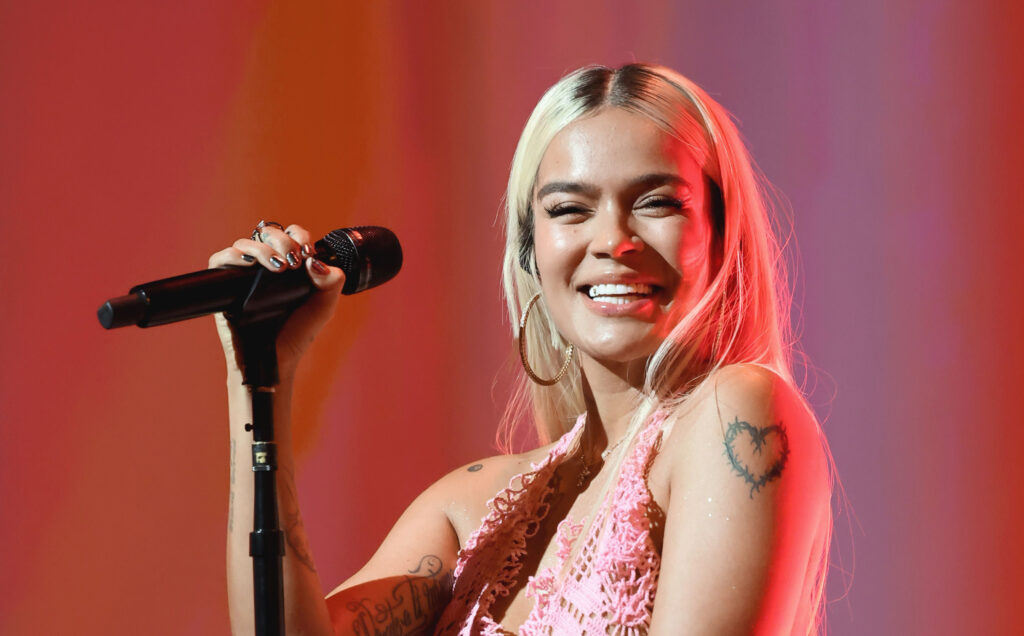Karol G walked into a party hosted by soccer stars Luis Suárez and Lionel Messi, watching as people danced to the cumbia styles of Uruguay and Argentina. She noticed how alive the room felt when surrounded by their culture. In Karol’s new Complex cover story, In Her Skin, she described this moment and remembered thinking, “Everyone was super happy because it represented those places. So I was like, Maybe I’ll do a song for every single genre that represents our Latina community.”

That moment, full of cultural pride, movement, and music, is what planted the seed for Tropicoqueta. For Karol, it’s not just an album, but a celebration of Latin identity. “Every single instrument that is on this album has come from what I’ve listened to all my life, and it’s meant to be there for a reason,” she says in her Complex cover story. We broke down the genres she referenced for her new project.
A genre with roots in Puerto Rico, reggaetón blends influences from dancehall, reggae, hip-hop, and more. “LATINA FOREVA” is a reggaetón homage with a twist reminiscent of the early 2000s. Inspired by Nuyorican pop duo Nina Sky and reggaetón pioneer Ivy Queen, the track honors Latinas and their extroverted qualities. It samples “Dile” by Don Omar and the rhythm of “Oye Mi Canto” by N.O.R.E., emphasizing Puerto Rican reggaetón roots.
Mambo, the Cuban dance music style, incorporates syncopated rhythms and brass arrangements. “Mambo No. 5” by Dámaso Pérez Prado is used in a teaser for Tropiccoqueta as a nod to Cuban cabaret culture and a hint at what’s to come in the new album. The visual aesthetic of the Tropicoqueta promo channels Carmen Miranda, suggesting a vibrant samba-inspired energy Karol G.
The fast-paced genre that is Merengue stems from the Dominican Republic and is powered by percussion and horns. On Tropicoqueta, it’s showcased in “Si Antes Te Hubiera Conocido,” a modern merengue that reflects themes of missed chances in love and commemorates Dominican musical culture.
Cumbia, the popular Latin dance music originally rooted in Colombia, developed its own style in Argentina with cumbia villera and cumbia pop. On Tropicoqueta, Karol merges Argentinian cumbia’s traditional rhythm with nostalgic pop. The chorus incorporates George Michael’s “Careless Whisper,” demonstrating a modern blending of cumbia pop.
Dembow, from the Dominican Republic, is built on repetitive, syncopated, high-energy rhythms. Karol’s dembow track on Tropicoqueta incorporates experimental components such as phone chirps for counter-rhythms that add a modern flair to the genre.
Bachata, a romantic genre derived from the Dominican Republic, is known for its syncopated guitar patterns and emotionally heartfelt lyrics. Karol’s track “Ivonny Bonita” on Tropiccoqueta invites a montuno-style bachata to the party. It’s layered with a horn solo and a quiet outro that’s produced by Pharell Williams.
These two traditional genres of Mexican music are rooted in Guadalajara. Rachera includes emotional, romantic, and melancholic lyrics alongside a Mariachi ensemble that usually uses trumpets, violins, guitarrón, vihuela, and guitars. Both genres are curated to evoke powerful emotions of love, loss, and patriotism.
Karol G showcases a slow-tempo Ranchero ballad emphasized by a 57-piece Guadalajara orchestra on the track “Ese Hombre Es Malo.” This track takes inspiration from Mexican pop icon Juan Gabriel and drives traditional mariachi components to life alongside a piano. Karol G told Complex, “This song has a lot of power.”
Samba, an Afro-Brazilian genre, is recognized for its infectious rhythms and syncopated percussion that’s tied back to Brazilian carnival culture. Although full music details of the Samba influence in Tropicoqueta are yet to be released, the album’s visual aesthetic pays tribute to Carmen Miranda’s samba legacy.



